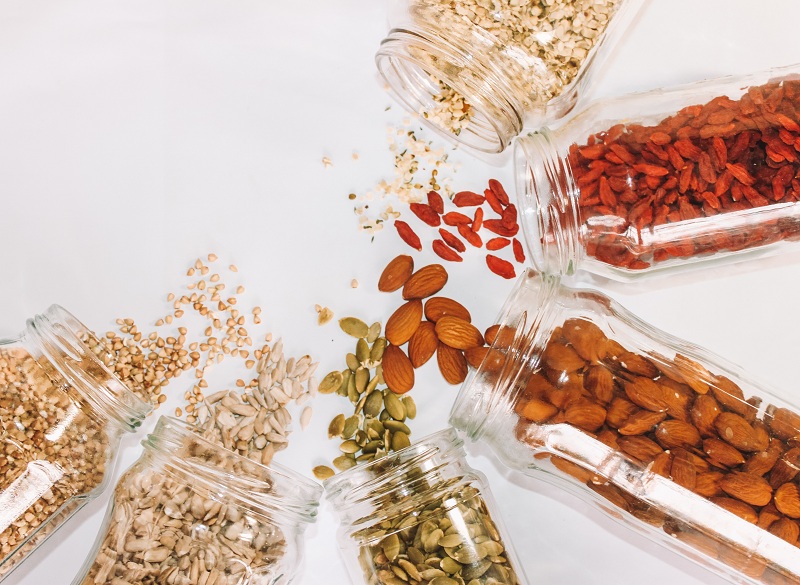How likely are you to get injured at work? If you’re not taking precautions to keep your body as healthy as possible, you may face more injury risks than you realize. After all, tired brains make more mistakes, while stiff muscles and tendons are easier to tear. Even if you follow all safety protocols or have a job that’s light on physical labor, you could experience one of the 2.8 million workplace injuries and illnesses that are reported to the Bureau of Labor Statistics every year. And if your work responsibilities do include strenuous labor or hazardous conditions, it’s especially important to eliminate the risks within your control.
If you want to stay healthy and injury-free at work, start with your overall wellness. Here are some of the simplest ways to get and stay in shape:
Stretch Your Body Before and During Work
Whether you’re on your feet or at a desk all day, your body is subjected to repetitive movements and postures for long periods of time.
Over the course of months or years, this repeated stress can put pressure on your soft tissue, creating everything from tension and inflammation to torn tendons and chronic back pain.
More immediate stiffness, soreness, and pain are possible too. Prevent a repetitive strain injury by performing daily stretches to keep your muscles as loose and flexible as possible.
Stretching before your shift will warm up your soft tissue, making it more elastic and less susceptible to damage. When you stretch, you also increase blood circulation and improve muscle coordination and range of motion in your joints.
Stretching before your shift will warm up your soft tissue, making it more elastic and less susceptible to damage. When you stretch, you also increase blood circulation and improve muscle coordination and range of motion in your joints.
Not sure how to get started? Every time you stretch, warm up your muscles first by jogging in place for 5 minutes, taking a walk, or doing a set of jumping jacks. Then slowly perform these stretching exercises, designed to reduce fatigue and prevent stiffness and injury:

- Forward lunges
Stand with your feet together and hands on your hips, then take a big step forward with your right foot and lower into a lunge. When both knees are at right angles, hold for five seconds, then push off with your core and return to your starting position. Repeat with your left leg. Whether you lunge in place or down a hallway, these exaggerated steps will help tone your core and leg muscles.
- Shoulder shrugs
Stand with your arms at your side, then inhale deeply and slowly as you shrug your shoulders up to your ears. Hold this position for one second, then exhale and release. Reduce neck and shoulder stiffness with at least three of these slow, deliberate shrugs every few hours.
- Back arches
Stand or sit with your back straight and your feet close together. Place your palms on your lower back, then slowly lean backward over them, supporting your bending back with your hands. Hold the arch for five seconds before slowly straightening out again. Repeat this at least five times. These slow, supported arches help keep your back agile.
Pack Your Diet with Superfoods
A well-rounded diet includes healthy choices from all food groups, but some foods are especially good at keeping you healthy. These “superfoods” have higher concentrations of important vitamins and nutrients, and may also contain antioxidants that reduce specific disease risks and keep your immune system resilient.
If you want to skip the next cold or flu that goes around the office, make sure your diet contains some of these health boosters.
Eating smarter is as easy as integrating some plant-based staples into your current diet regimen. Start with a few of Harvard Medical School’s top ten superfoods:

- Nuts
Packed with plant protein and “good” fats, nuts and nut butter are superb health boosters in small quantities. Cashews, almonds, walnuts, pecans, and hazelnuts are dense in both calories and important nutrients.
- Olive oil
A delicious alternative to butter, margarine, or salad dressing, olive oil has the vitamin E and monounsaturated fats you need to keep your heart and other organs in functional shape.
- Leafy green vegetables
Dark, leafy greens such as spinach, mustard greens, and collard greens are full of calcium, vitamins A and C, and fiber. Many are also rich in iron, folate, and vitamin K, making them a smarter choice than lettuce for salads, soups, and sandwiches.
- Cruciferous vegetables
Flowering veggies like cabbage, cauliflower, broccoli, and Brussels sprouts are excellent sources of fiber. They also contain beneficial natural chemicals, such as sulforaphane, which stimulates the enzymes that prevent cancer.
- Legumes
Beans, peanuts, and peas are some of the most affordable and nutritious protein sources on the planet. These superfoods also have fiber, iron, folate, and phosphorus. Trade your next portion of meat or seafood for chickpeas, black beans, or lentils, which add texture and protein to your meals without the calories and fat of meat.

Stay Hydrated
Most of your muscle tissue is made of water, and it needs regular hydration to function properly. Your brain is composed of even more water, and drinking water maintains the blood and oxygen flow it needs to concentrate, remember, and emote. If you get frequent headaches or have trouble concentrating after a day of work, you may not be drinking enough water.
This means your other organs and tissue are at risk, too. Add more water to your daily routine right away.
Sufficient hydration is the bare minimum of mental and physical wellness, but dehydration can overrule the rest of your abilities and lead to injuries, accidents, and decreased productivity. It also makes it more difficult to heal after putting stress on your body. Keep a water bottle with you at all times, and refill it when you see that it’s empty. Water breaks are also convenient reminders to change positions and move around.
Are you ready to be healthier and more productive at work? Just a few lifestyle adjustments could make the difference between injury and wellness. Make sure your body and mind are in shape for your next shift.




